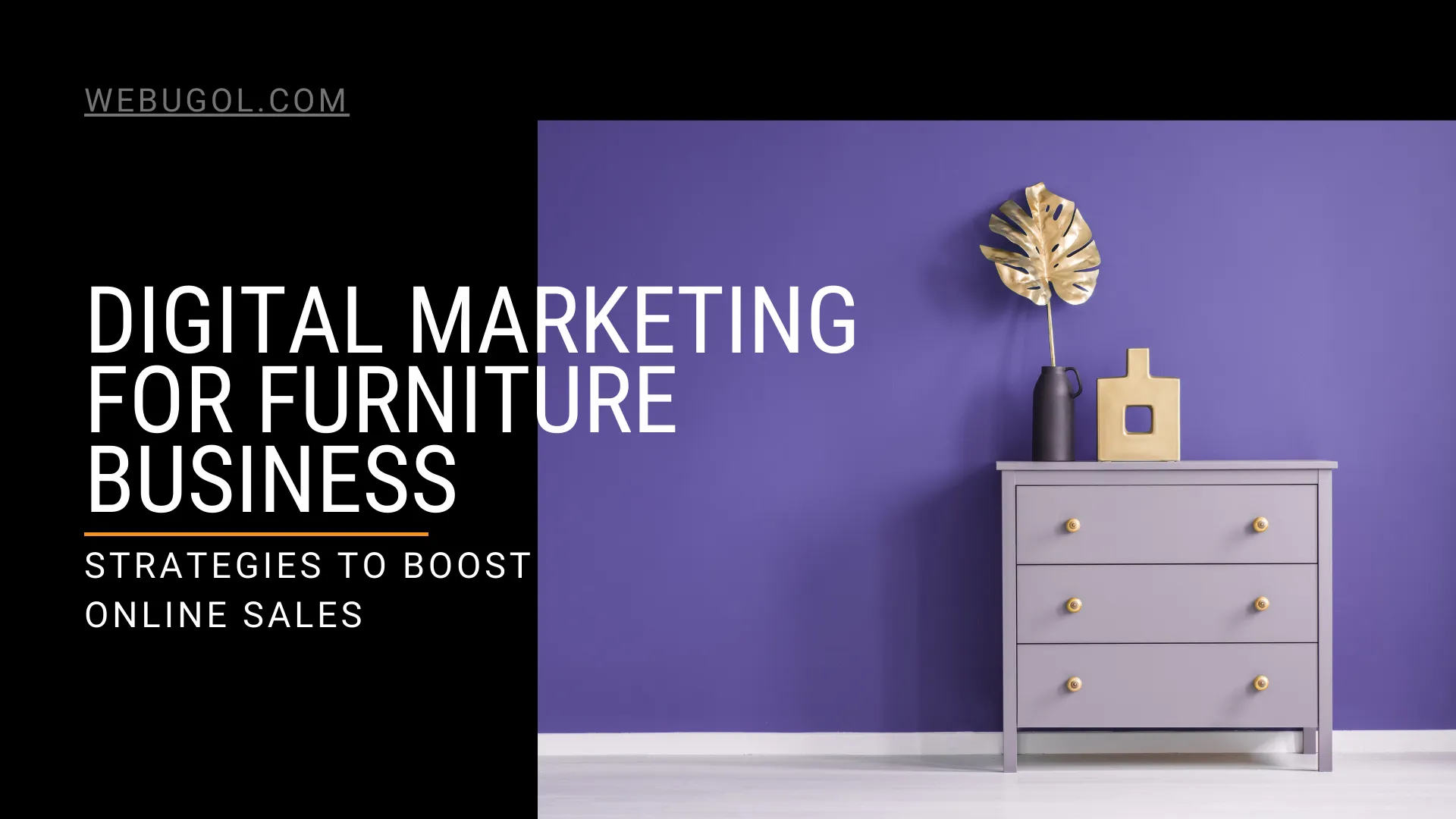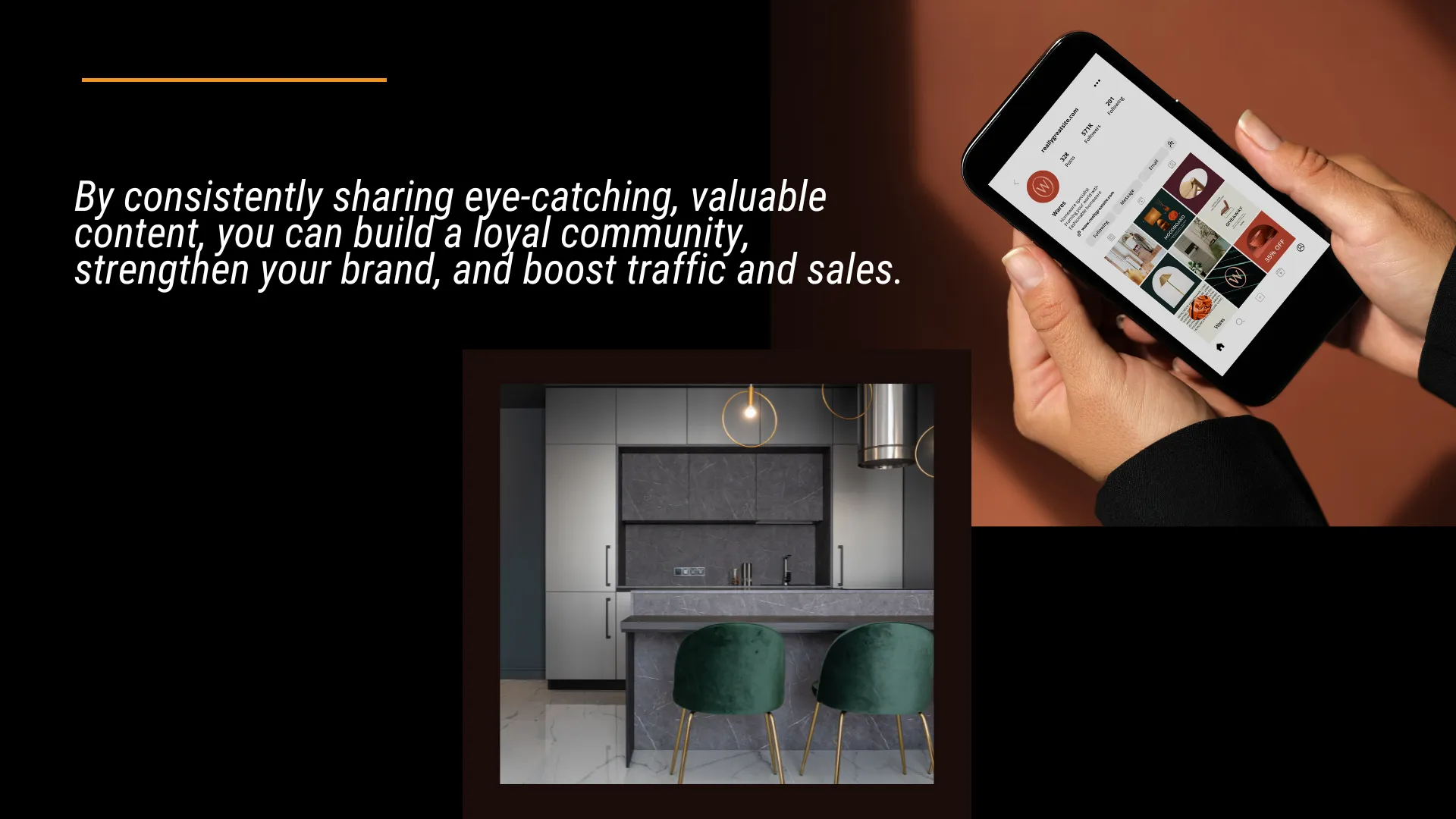Digital Marketing for Furniture Business: Strategies to Increase Online Sales and Brand Awareness
The furniture industry has changed dramatically in the past decade due to consumer demands and innovation. Furniture companies have to rethink their marketing plans to remain competitive as e-commerce and digital-first buying behavior grow. An effective furniture marketing strategy for your furniture business is essential to turning clicks into consumers and making your brand memorable.
We aim to offer practical solutions especially designed to enable furniture companies to succeed in the digital domain. Every furniture shop needs these ideas to succeed online, from social media to e-commerce optimization. Whether your goal is to improve your digital strategy or you’re just starting, this article will enable you to confidently navigate the competitive online scene.
Why Selling Furniture Online Isn’t Just About Selling
The Furniture Market Shakeup: Trends Disrupting the Way Furniture Is Bought and Sold
Driven by new technology, shifting customer behavior, and creative business strategies, furniture marketing is changing. For convenience and variety, more individuals are buying furniture online, disrupting the industry. Tools for virtual and augmented reality help consumers see furniture in their area before making a purchase, therefore improving the experience.
Sustainable, upcycled, and used furniture is also popular with eco-conscious shoppers. Younger, mobile generations seeking adaptability are drawn to subscription-based and rent-to-own arrangements. Furniture companies joining or growing in the market must adapt to these changes.
 What Today’s Buyers Expect: Online Convenience Meets High-Touch Experiences
What Today’s Buyers Expect: Online Convenience Meets High-Touch Experiences
Furniture purchasers today want the perfect mix of technology convenience and personal connection. With thorough details, high-quality photos, and even augmented reality tools to see how items might fit into their environments, they want the capacity to effortlessly search for products online. They also value individualized customer services like live chat, video consultations, and product recommendations. Consumers want meaningful relationships and a sense of trust; they are not satisfied with a simply transactional experience. By aligning your online strategy with these expectations, you can engage potential customers and set yourself apart from the competition.
Hurdles Ahead: Common Challenges in Attracting and Converting Online Shoppers
Although the market for digital furniture presents many prospects, companies fail to draw in and convert online customers. Consumers are afraid of buying furniture online without touching it. Though they demand investment, excellent photos, thorough descriptions, and augmented reality (AR) features can help. Buyers are often discouraged by logistics including high shipping prices, complicated returns, and late deliveries. Another problem is trust since clients appreciate openness on sustainability, durability, and quality. Businesses require good customer service, competitive pricing, and a smooth user experience for sustained success.
Digital Marketing for Furniture Business: Strategies That Can Transform Your Company
Furniture retailers must flourish in the competitive market through digital marketing. SEO, social media ads, and email marketing increase visibility and personalize campaigns. By providing insights into consumer behavior, data-driven marketing also helps companies to keep ahead of trends and modify their strategy. Reaching and retaining online audiences is harder without a solid digital presence.
Turn Your Website into a Virtual Showroom
Create a virtual showroom on your website to increase customer engagement and conversions. Create an engaging online shopping experience with high-quality photos, slick interfaces, and interactive elements. Advanced AR and VR features let buyers visualize things in their homes, such as how a sofa fits their living room or a dining set matches their decor, bridging the gap between online and offline buying.
Your site operates well on all devices with a mobile-first design, satisfying smartphone users. Easy navigation, fast load times, and responsive layouts boost usability and improve search engine optimization. These features create an elegant digital showroom that inspires exploration, engagement, and conversion.
Storytelling That Sells: Content Marketing That Matters
Content marketing, especially in furniture retail, requires compelling storytelling. Your brand’s authority blog ideas can educate and inspire. Write guides to answer common inquiries and demonstrate your knowledge. Showcase your furniture’s qualities, craftsmanship, and versatility with engaging videos. Customers enjoy viewing how things perform in real life, enabling them to visualize the furniture in their homes.
User-generated content lets customers share their experiences, adding authenticity. Encourage buyers to display product photos, videos, and reviews. Share these stories on your website and social media to establish trust. Expert advice, images, and client voices may build a captivating narrative that improves sales and engagement.
Social Media: The Digital Living Room for Furniture Fans
Social media marketing increases excitement and engagement. Furniture enthusiasts use Instagram and Pinterest to find, share, and design their ideal environments. High-quality photos, designed sets, and compelling videos on these visually-driven platforms can motivate consumers to buy the furniture. Share engaging, valuable content to establish a devoted audience, strengthen your brand, and increase traffic and revenue.
 Ads That Follow Up (Because Your Customers Need a Nudge)
Ads That Follow Up (Because Your Customers Need a Nudge)
Hyper-targeted Google and Facebook ads can boost the conversion of clients. Retarget shoppers who left your site without checking out using data-driven methods. Furniture digital marketing should also remind consumers of the things they browsed, possibly with a limited-time discount or free shipping. Another method to create urgency is with FOMO-focused discounts and promotions. “Hurry, only a few left in stock!” or “Sale ends tonight!” may encourage indecisive shoppers. Follow-up advertising can enhance conversions with precise targeting and enticing calls to action.
Email That Feels Personal, Not Pushy
Email marketing should seem like conversations rather than sales pitches. Start by calling clients by name and mentioning their past purchases or interests in your business. Personalization shows you value them and builds a connection. Keep your tone nice and approachable; steer clear of too forceful wording that would come across as pushiness.
Designing Newsletters Your Customers Actually Want to Read
Newsletters should offer more than product promotion. Include useful advice, industry insights, or audience-relevant stories. Make your newsletters interesting and informative to make clients look forward to them. Use compelling images, clean headlines, and clear calls to action to keep their attention throughout the email.
Expanding Your Furniture Marketing Reach with Online Marketplaces
Amazon, Wayfair, and Etsy are wonderful ways to furniture sales. Millions of shoppers use these sites due to their visibility. However, success requires combining market exposure with brand identity.
Consider your business goals and audience while choosing a marketplace. Amazon is appropriate for fast-moving, high-demand items, while Etsy is good for niche, handmade, or creative items. Wayfair concentrates on home and furniture, thus it may not work in other businesses. Each platform offers different benefits, features, and costs.
Crafting a Customer Experience They’ll Rave About
Creating a remarkable customer experience builds brand loyalty and relationships. Customer-focused initiatives can set your organization apart and garner excellent reviews. Here are some actionable methods to improve customer experience:
- Offering Personalized Online Design Consultations: Online design consultations tailored to consumer preferences make them feel respected and understood. This tailored strategy improves shopping satisfaction.
- Designing Seamless Checkout Experiences (and Why It Matters): A simple checkout can reduce cart abandonment and impress customers. An easy checkout boosts conversions and shows professionalism and reliability.
-
Going Above and Beyond with Exceptional Customer Service: Excellent service can make everyday transactions memorable. Customers will return and passionately endorse your brand if they feel cared for.
Numbers That Matter: How to Measure and Refine Your Strategies
 Data-driven decisions underpin any effective business strategy. Website traffic, conversion rates, and ROI show how well your efforts are paying off. Regularly monitoring these figures reveals client behavior and places for development.
Data-driven decisions underpin any effective business strategy. Website traffic, conversion rates, and ROI show how well your efforts are paying off. Regularly monitoring these figures reveals client behavior and places for development.
Track performance with Google Analytics, heatmaps, or CRM platforms to stay ahead. These tools allow you to detect customer experience bottlenecks and clarify what’s working. A/B testing headlines, layouts, and call-to-actions might reveal winning combinations that improve the furniture marketing strategy. Measure, tweak, and repeat to improve your approach and expand over time.
Frequently Asked Questions
1. What is the Best Advertising for Furniture Stores?
The most effective furniture advertising mixes digital and conventional marketing to engage customers. Digital techniques like Instagram, Facebook, and Pinterest promote furniture designs, while PPC and SEO increase website traffic and local search ranks. Traditional approaches like home décor magazine ads and in-store events build relationships. So, multi-channel marketing promotes brand recognition and meets customers online and offline.
2. What is the Target Market for the Furniture Business?
Furniture businesses target different markets depending on their products and brand image. It usually includes homeowners, renters, and interior designers decorating homes or businesses. Some companies specialize in luxury furniture for wealthy people or affordable solutions for students and young adults. While customized furniture brands may appeal to those looking for distinctive, personalized items, eco-friendly brands could attract consumers who share their values.. Understanding your target market is essential to developing efficient marketing tactics and product customization.
3. How to Write a Furniture Advertisement?
Effective furniture marketing needs enticing pictures, persuasive language, and clear information. Start with high-quality photos of the furniture’s design, materials, and unique features. Highlight unique selling characteristics, like durability, comfort, and aesthetics. Add measurements, materials, and colors or finishes. Finally, emphasize how the furniture improves the buyer’s lifestyle or space to keep the ad targeted.
Conclusion
Today’s competitive market requires data-driven tactics for long-term success. Website traffic, conversion rates, client acquisition costs, and ROI can help firms identify what works and what doesn’t. This lets them optimize marketing and operations for maximum outcomes and efficiency.
Adaptability is the key to continued growth — adapting to market developments, improving strategy, and meeting client needs sets successful organizations unique. Maintaining adaptability against innovation and disturbance guarantees success and long-term resilience.
Businesses must spend on furniture marketing to thrive. Digital strategies provide sustainable growth by improving brand visibility and meaningfully connecting with the target audience. Partner with Webugol, a professional agency with expertise in driving measurable results, and take the first step towards a successful and future-ready business. Reach out today to begin your growth journey!


